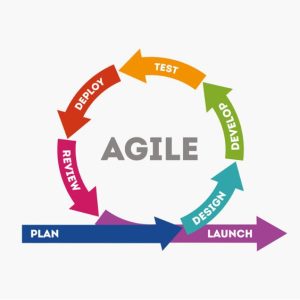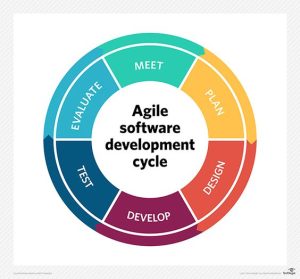Sap Agile Methodology
SAP Agile Methodology is a dynamic approach to project management, particularly in the realm of enterprise software development. It prioritises flexibility, collaboration, and customer-centricity. By embracing Agile principles, organisations can streamline SAP projects, accelerate digital transformation, and respond effectively to evolving business requirements. This approach fosters frequent, incremental delivery of functional software components, reducing time-to-value and enhancing user satisfaction. However, transitioning to Agile may require a cultural shift and careful resource allocation. Despite challenges, SAP Agile Methodology stands as a powerful tool for organisations navigating the ever-evolving digital landscape.
Unlocking Efficiency and Innovation:
In the rapidly evolving world of enterprise software development, businesses seek agile methodologies that can keep up with changing demands and deliver value promptly. SAP Agile Methodology emerges as a robust solution, allowing organizations to streamline their SAP projects and adapt to shifting business landscapes. This article delves into the intricacies of SAP Agile Methodology, exploring its key principles, benefits, implementation strategies, and real-world applications. Also, read about Hangman Python Code| Unveiling the Magic
Understanding SAP Agile Methodology
SAP Agile Methodology is an approach to SAP project management that prioritizes flexibility, collaboration, and customer-centricity. It incorporates Agile principles into the implementation, enhancement, and optimization of SAP solutions, making it an ideal fit for organisations aiming to accelerate digital transformation and respond effectively to evolving business requirements.
Key Principles of SAP Agile Methodology
Customer Collaboration over Contract Negotiation: SAP Agile places customer collaboration at the forefront. Close cooperation with end-users, stakeholders, and cross-functional teams ensures that the SAP solution aligns with business objectives and remains adaptable to evolving needs.
Responding to Change over Following a Plan: SAP Agile embraces change as a natural part of the development process. Instead of rigidly sticking to a predefined plan, teams adjust their strategies and priorities based on feedback and changing business conditions.
Delivering Working Solutions Frequently: Frequent, incremental delivery of functional software components enables organisations to realise value early in the project. It also provides opportunities for users to provide feedback and guide further development.
Individuals and Interactions over Processes and Tools: SAP Agile emphasises the importance of communication, collaboration, and individual contributions within cross-functional teams. Effective teamwork is prioritised over reliance on processes and tools.
Embracing Business Objectives: SAP Agile Methodology keeps business objectives at the forefront, ensuring that every aspect of SAP project development aligns with the company’s overarching goals. For more information visit our website techfuses.com
Benefits of SAP Agile Methodology
Faster Time-to-Value: Agile principles enable organisations to deliver small, functional increments of their SAP solution more frequently, reducing time-to-value significantly.
Enhanced Collaboration: SAP Agile promotes cross-functional collaboration, fostering stronger communication among development teams, business units, and stakeholders.
Adaptability: The ability to respond to changing business needs ensures that SAP solutions remain relevant and effective.
Reduced Risk: Frequent testing and validation throughout the development process minimise the risk of costly errors and misalignment with business objectives.
Improved User Satisfaction: Continuous user involvement and feedback result in solutions that better meet end-users’ needs and expectations.
Cost Efficiency: Agile practices can help organisations optimise resource allocation and reduce unnecessary spending.

Implementing SAP Agile Methodology
Implementing SAP Agile Methodology involves several key steps:
Assessment: Begin by assessing the organisation’s readiness for Agile adoption. This includes evaluating existing SAP processes, team structures, and available resources.
Training: Train teams in Agile principles and methodologies, emphasising collaboration, flexibility, and customer-centricity.
Team Formation: Create cross-functional teams that include members from various departments and disciplines, ensuring diversity of skills and perspectives.
Backlog Creation: Develop a product backlog that outlines the SAP project’s goals, features, and priorities. The backlog serves as the roadmap for development.
Sprint Planning: Break down the project into smaller, manageable segments known as sprints. Each sprint focuses on specific features or functionalities from the backlog.
Daily Stand-Up Meetings: Hold daily stand-up meetings where team members discuss progress, challenges, and plans. This fosters transparency and helps teams stay aligned.
User Feedback: Continuously engage with end-users to gather feedback and incorporate it into the development process.
Iterative Development: Iteratively develop and release SAP components, continuously improving and refining the solution based on user feedback.
Retrospectives: Conduct regular retrospectives to assess what went well and what could be improved in the Agile process itself.
Scaling: As the organisation gains experience with SAP Agile, consider scaling Agile practices to other areas of the business.
Real-World Applications of SAP Agile Methodology
SAP Agile Methodology finds applications across various industries and business functions:
Manufacturing: Manufacturers use SAP Agile to adapt to changing customer demands, optimise production processes, and improve supply chain efficiency.
Retail: Retailers leverage SAP Agile to enhance customer experiences, manage inventory more effectively, and respond swiftly to market trends.
Finance: Financial institutions adopt SAP Agile to streamline accounting processes, manage risk, and develop customer-centric banking solutions.
Healthcare: Healthcare organisations utilise SAP Agile to enhance patient care, optimize hospital operations, and accelerate drug discovery processes.
IT Services: IT service providers use SAP Agile to deliver software solutions that meet evolving client needs while minimising project risks.
Challenges and Considerations
While SAP Agile Methodology offers numerous advantages, it also presents challenges that organisations should be prepared to address:
Cultural Shift: Transitioning to Agile often requires a cultural shift within an organisation, which can be met with resistance from employees accustomed to traditional project management approaches.
Resource Allocation: Agile requires dedicated teams and resources, and organisations must be prepared to allocate these accordingly.
Complexity: Agile projects can become complex, especially in large enterprises with multiple interconnected systems. Robust project management and coordination are essential.

Change Management: Effective change management is crucial to ensure that Agile practices are embraced and integrated smoothly.
Conclusion
SAP Agile Methodology represents a dynamic approach to SAP project management, emphasizing flexibility, collaboration, and adaptability. By embracing Agile principles, organizations can streamline SAP implementations, enhance user satisfaction, and respond effectively to changing business needs. However, successful adoption requires a commitment to cultural change, ongoing training, and meticulous project management. As businesses continue to navigate the ever-evolving digital landscape, SAP Agile Methodology offers a pathway to unlock efficiency and innovation in enterprise software development.
FAQS
- What is SAP Agile Methodology?
SAP Agile Methodology is an approach to SAP project management that emphasises flexibility, collaboration, and customer-centricity. It incorporates Agile principles into the implementation, enhancement, and optimization of SAP solutions.
- How does SAP Agile Methodology differ from traditional project management?
SAP Agile Methodology prioritises adaptability over rigid planning, frequent incremental deliveries, and collaboration with stakeholders. Traditional project management often follows a linear, predefined plan.
- What are the key principles of SAP Agile Methodology?
Key principles include customer collaboration, responding to change, frequent delivery of working solutions, prioritising individuals and interactions, and aligning with business objectives.
- What benefits does SAP Agile Methodology offer?
SAP Agile Methodology offers benefits such as faster time-to-value, enhanced collaboration, adaptability to changing business needs, reduced risk, improved user satisfaction, and cost efficiency.
- How is SAP Agile Methodology implemented in an organisation?
Implementation involves assessing readiness, training teams, forming cross-functional teams, creating a product backlog, sprint planning, daily stand-up meetings, user feedback integration, iterative development, retrospectives, and potentially scaling Agile practices.















